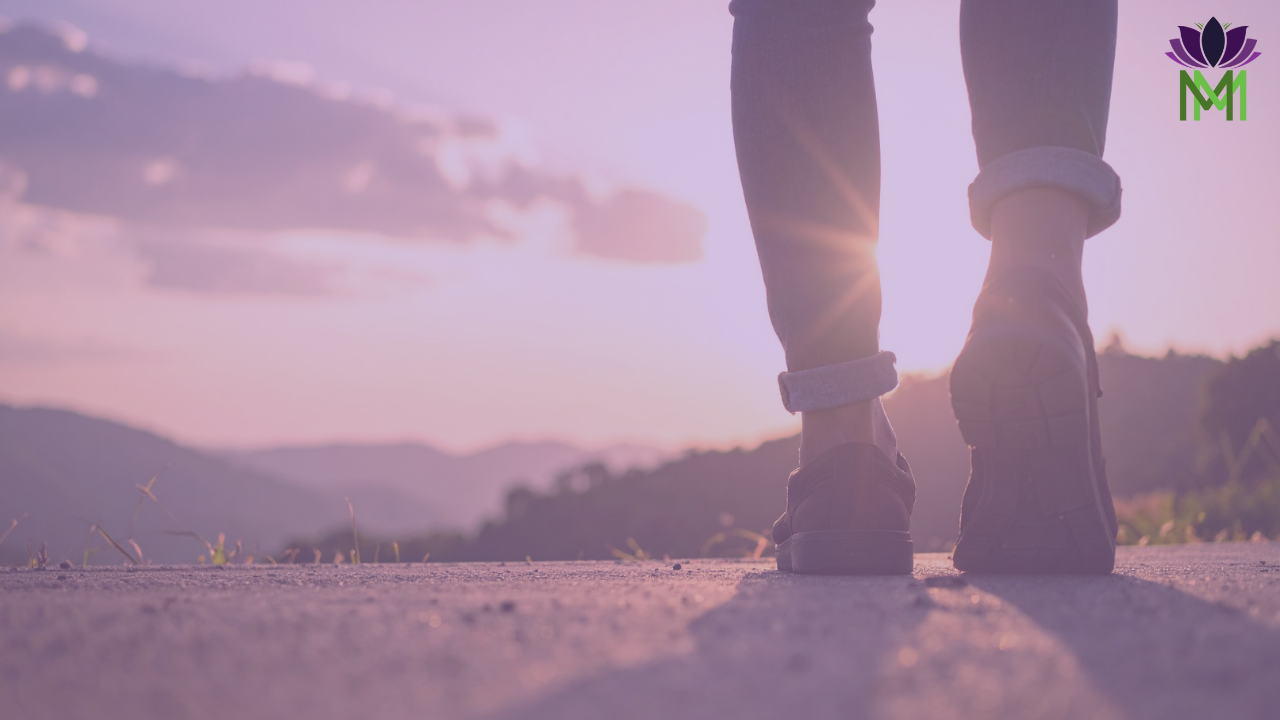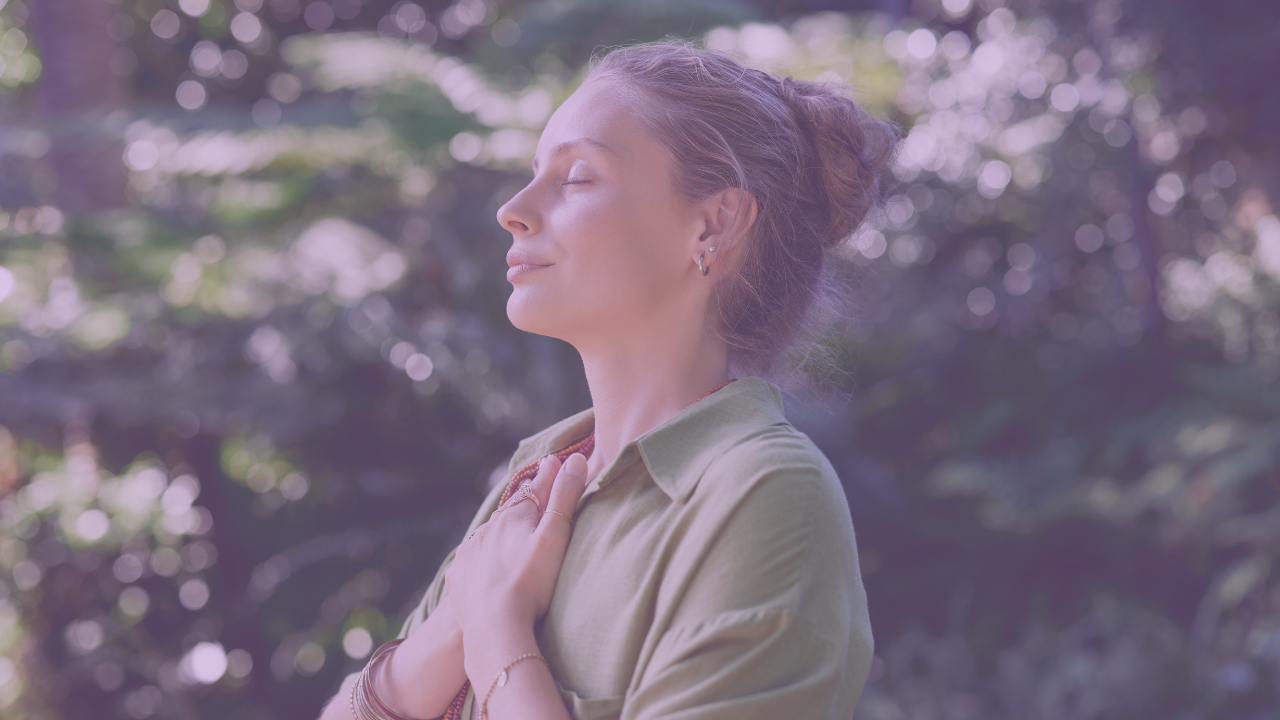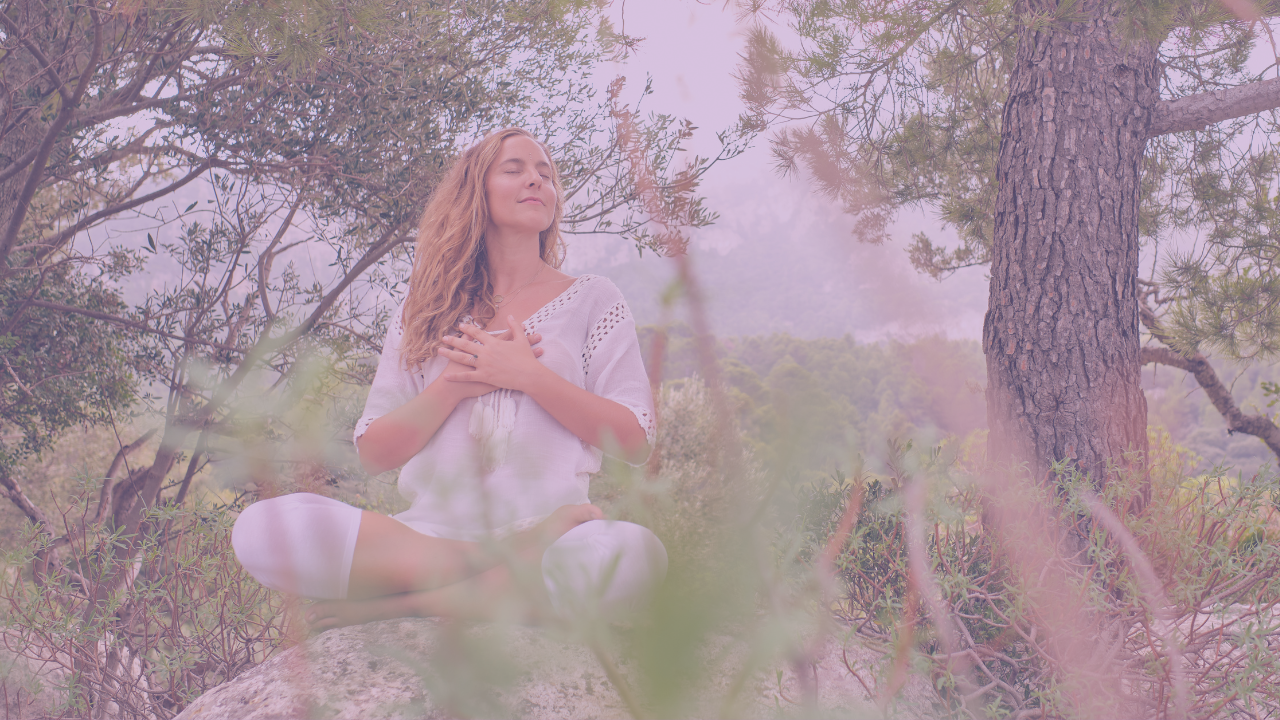"Your mind is like this water, my friend. When it is agitated, it becomes difficult to see. But if you allow it to settle, the answer becomes clear." — Bil Keane
Have you ever sat down to meditate and been derailed by a busy overthinking mind, only to give up and move on? Or has your busy mind stopped you from sitting down to practice in the first place?
You are not alone. I could definitely answer yes to those two questions. And a lot of my clients who use meditation have also experienced this challenge.
Today, I want to share a useful and simple tool you can use to help quiet your busy mind, create room for calm thoughts and peaceful brain space, and connect deeply to your body. If you have been around The Mindful Movement community for a while, you will likely be able to guess this tool.
Movement with Meditation
Why movement and meditation?
I learned through my own journey that movement is an essential piece to adopting meditation as a comfortable and enjoyable practice. When I started my yoga practice and even during my teaching journey, I struggled with meditation. I didn’t pay a lot of attention to meditation (who wants to sit still and breathe when there are so many things to do?)
And I now can recognize that for so long, I have tied my worth to all those things I do! This is still a work in progress for me, but I have come a long way.
Because it was the hardest practice for me, I also avoided teaching meditation in my yoga classes as well. I didn’t like savasana (a quiet and reflective last few minutes on the yoga mat before class ends), and I remember giving only two minutes of it in my classes. It has always been the most difficult pose for me and many of my students will say the same.
A Breakthrough that Led to Powerful Changes
Then one day, I had a breakthrough. I was in the middle of a yoga pose, and just started crying out of nowhere.
I was shocked at this vulnerability (and honestly, the discomfort I was feeling about crying in a group yoga class) and had no idea what to do next. All I could do was allow the emotion to wash through me without fighting it. That moment was the most profound experience I had in yoga until that point. Everything about my practice and teaching had to change.
I sat to meditate after that breakdown-breakthrough, and to my surprise, I really felt like I could get out of my overthinking, processing mind to feel what was going on in my body. To connect deeply to something else besides my relentless thoughts.
I left feeling…different. More centered. A sense of calm that *finally* lasted more than a millisecond. A peaceful state of mind. What even was this quiet in my mind?
It was profound and it transformed how I practiced and taught yoga forever more. Since that moment, I went from teaching only yoga movements to enjoying and sharing the benefits of mindfulness and meditation practice too. (I didn’t want to let another minute go by as a teacher without sharing this life-changing skill.)
What you get when you Move and Meditate
If you’ve experienced distractions during your practice, guess what? You’re human–and not alone. We tend to get stuck in judgment, story, negative thought, or even physical discomfort (like your aching back or shoulders) when we sit still for a hot minute–it’s natural.
Meditation and movement are a match made in heaven. When we combine meditation and movement, we use our mind to connect with our body–and pretty soon the distractions fade into the background so you can focus on the exact present moment on the mat—where there is just YOU and your body and mind. (and if you are lucky, the stress and worry may melt away for the moment)
Mindful movement looks like coordinating your breath to match your movement, which allows more access to the true benefits of meditation:
- Calmness (so anxiety, fear, and stress begin to ebb out of your life and you are resilient enough to handle what is there)
- Contentedness (so you can start appreciating what you actually have and realize you are enough as you are)
- Self-Awareness (so you can catch physical symptoms and mental rabbit holes and intervene before they become emergencies)
How to get Started
I often get asked, which exercise (or movement) is best? This is like asking," what pants would be best for everyone?" The answer to both questions is that one size and one type does not fit all!
As for the movement question, I always recommend that you start with what feels good to you. I personally like a variety of exercises, and I can't seem to commit to doing something that I don’t like even if someone tells me it's the "best" form of exercise.
Try choosing a movement you enjoy that makes you feel better. It could be yoga, Pilates, or qi-gong (an ancient and relaxing martial art similar to tai-qi.)
Know that it doesn’t have to be a specific kind of movement - it could be strength training or machines at the gym. Above all, the important thing is to use your mind and body with intention–rather than living ONLY in your head while your body stays on “auto-pilot.”
Gentle, Vigorous, or any Mindful Movement will Do
Start with gentle movements if you like-– perhaps a slower style of yoga like yin or restorative, or even simply some easy and slow stretching in your living room.
If you don’t know where to begin, we have some gentle movement practices on our Youtube channel you can use to help you start.
If you have a lot of buzzing energy in your body and brain, you might prefer running, dancing, or more vigorous exercise to get the “energy” out before you can calmly sit for a meditation without feeling jumpy or distracted.
You may want to try a walking meditation. Notice the stride of your foot and the temperature of the sun on your skin. Observe what’s around you (hopefully some of the beauty in nature if you can find it near you.) The key here is to be slow and mindful– perhaps even matching your walk with your breath.
The Benefits are Many
Whether you want to reduce stress, control anxiety, or support your overall wellbeing, movement and meditation together can be an effective self-care strategy.
Try mindfully moving your body for just a few minutes at a time this week and see how it feels to you. Even a 5-minute session can work wonders for your overall feeling of peace and wellness.
If you are looking for support, guidance, and accountability to get your program started, our 6-week group coaching program is here to help you stay on track.
Join me to Move and Meditate
I’m excited to offer a 6-week guided pathway toward self-care that feeds your foundation of satisfaction, contentment, and body ease.
I’d love for you to learn more about how we do this here, to discover all the details of how to “move beyond damage control and into whole body fulfillment and self-trust.”
Take good care,
Sara







